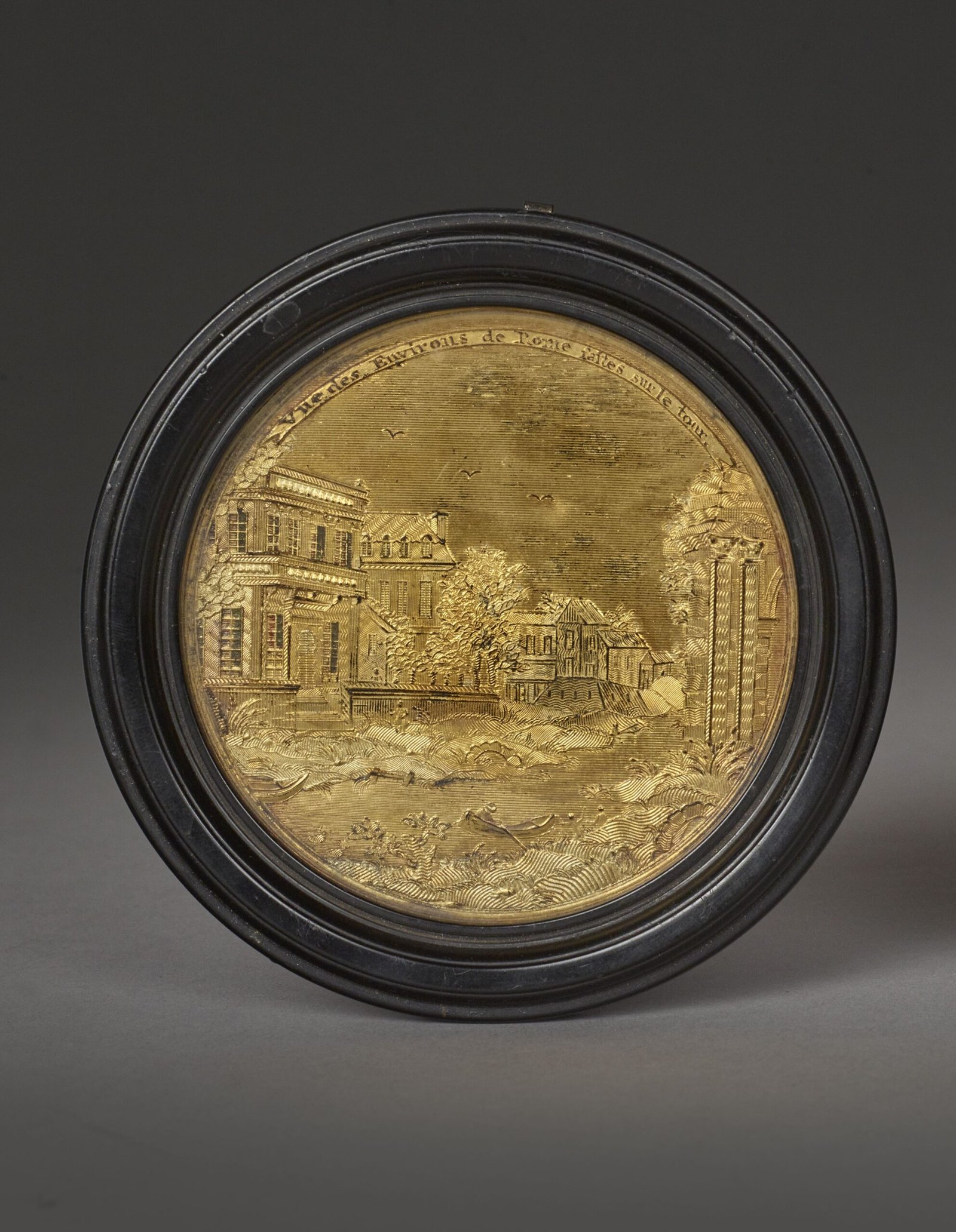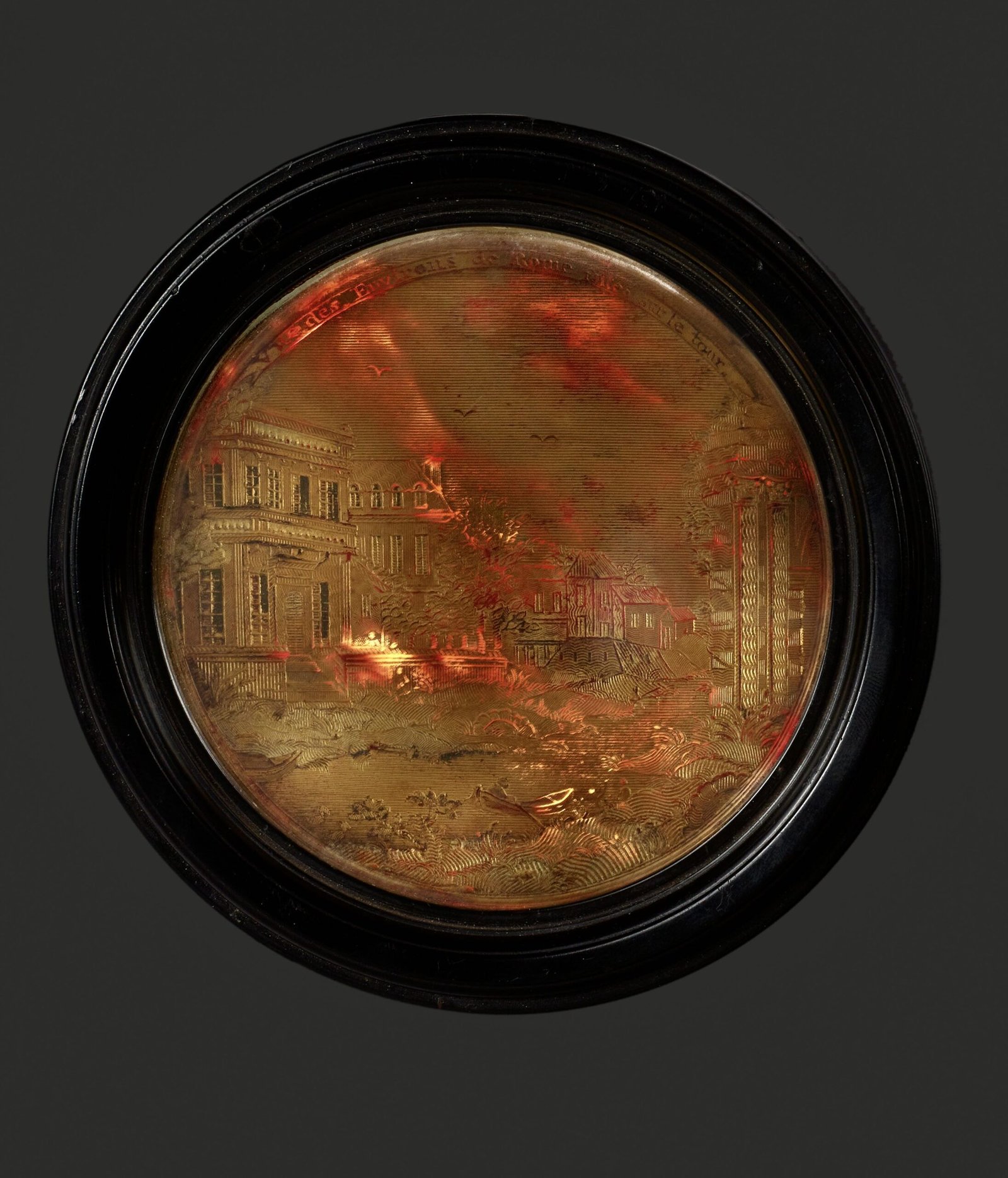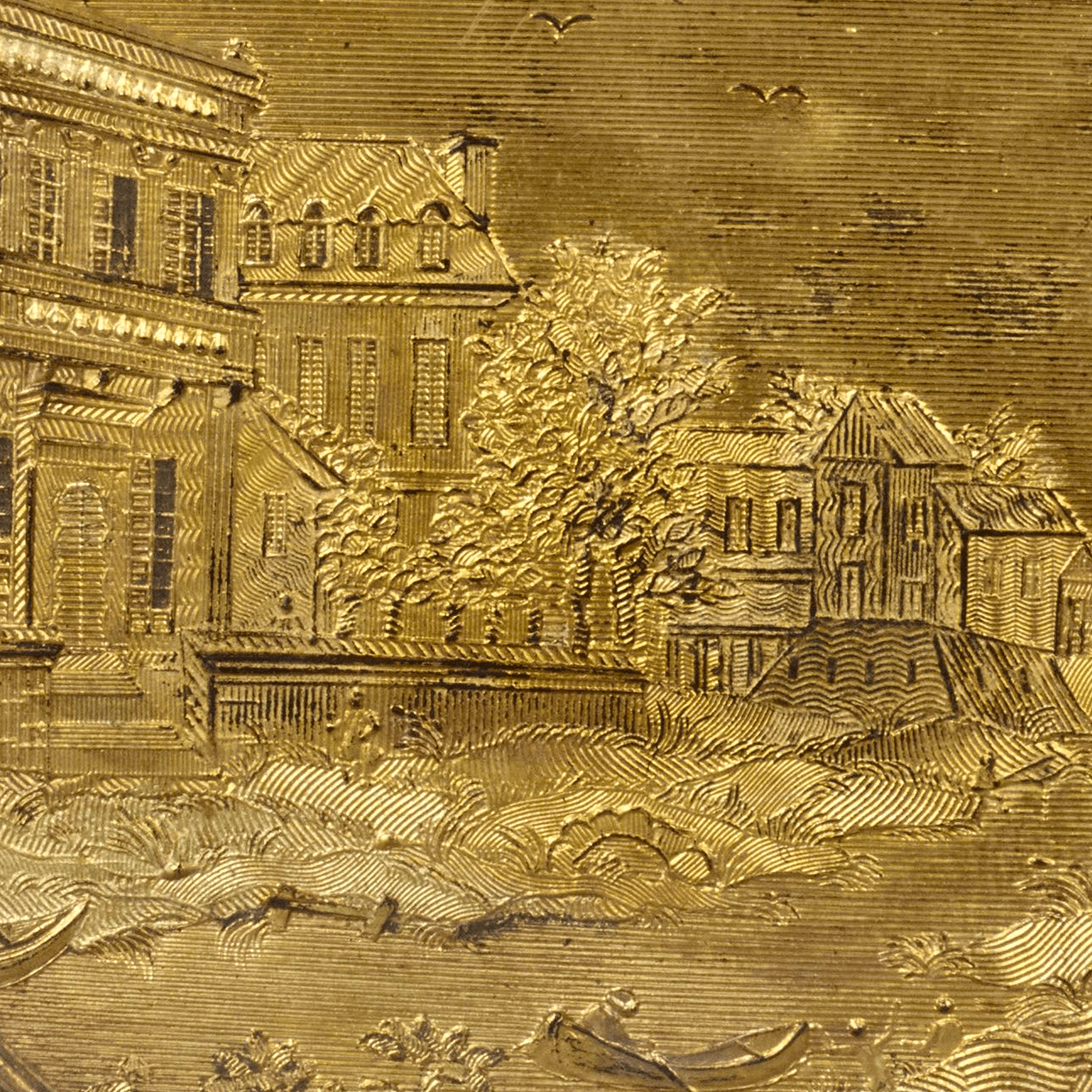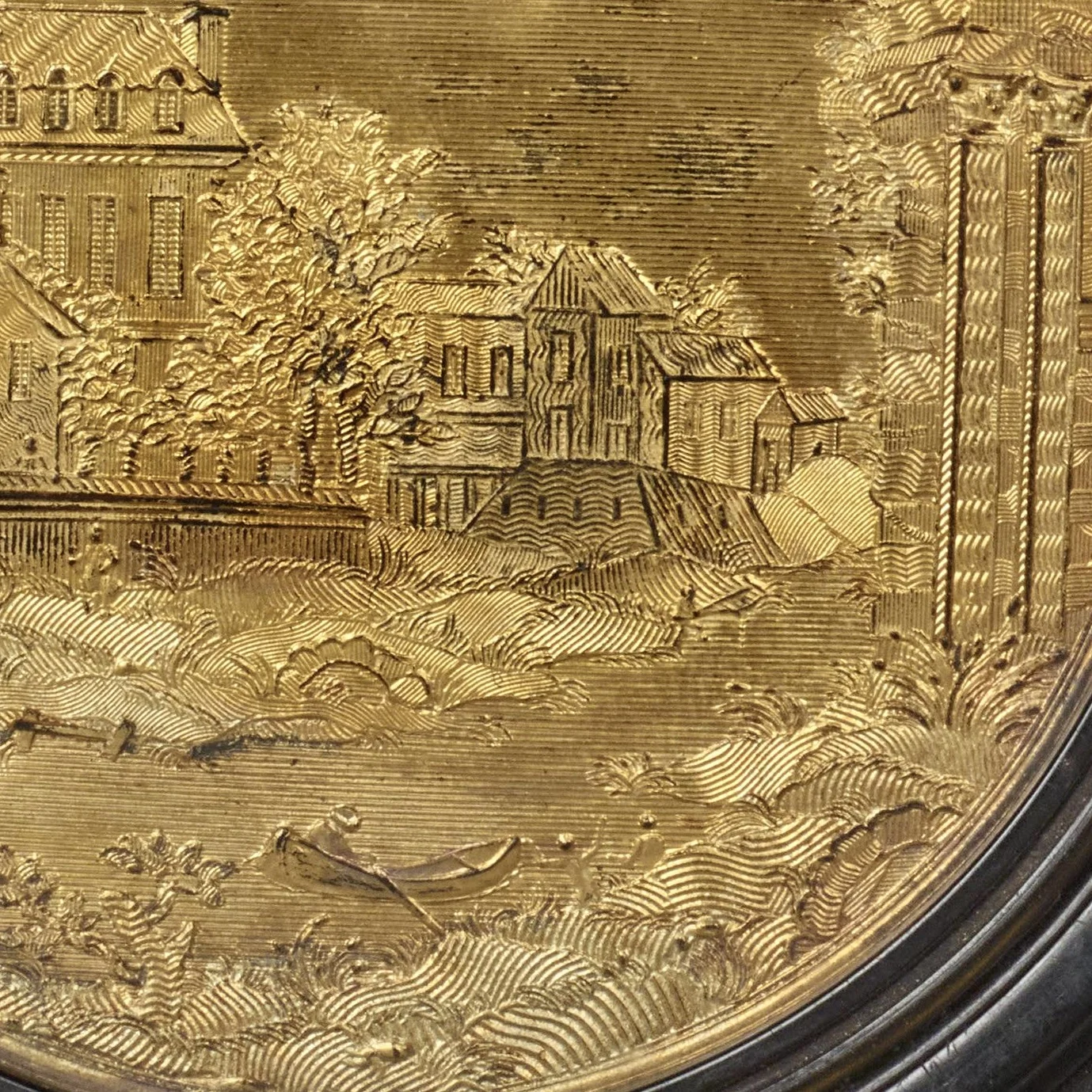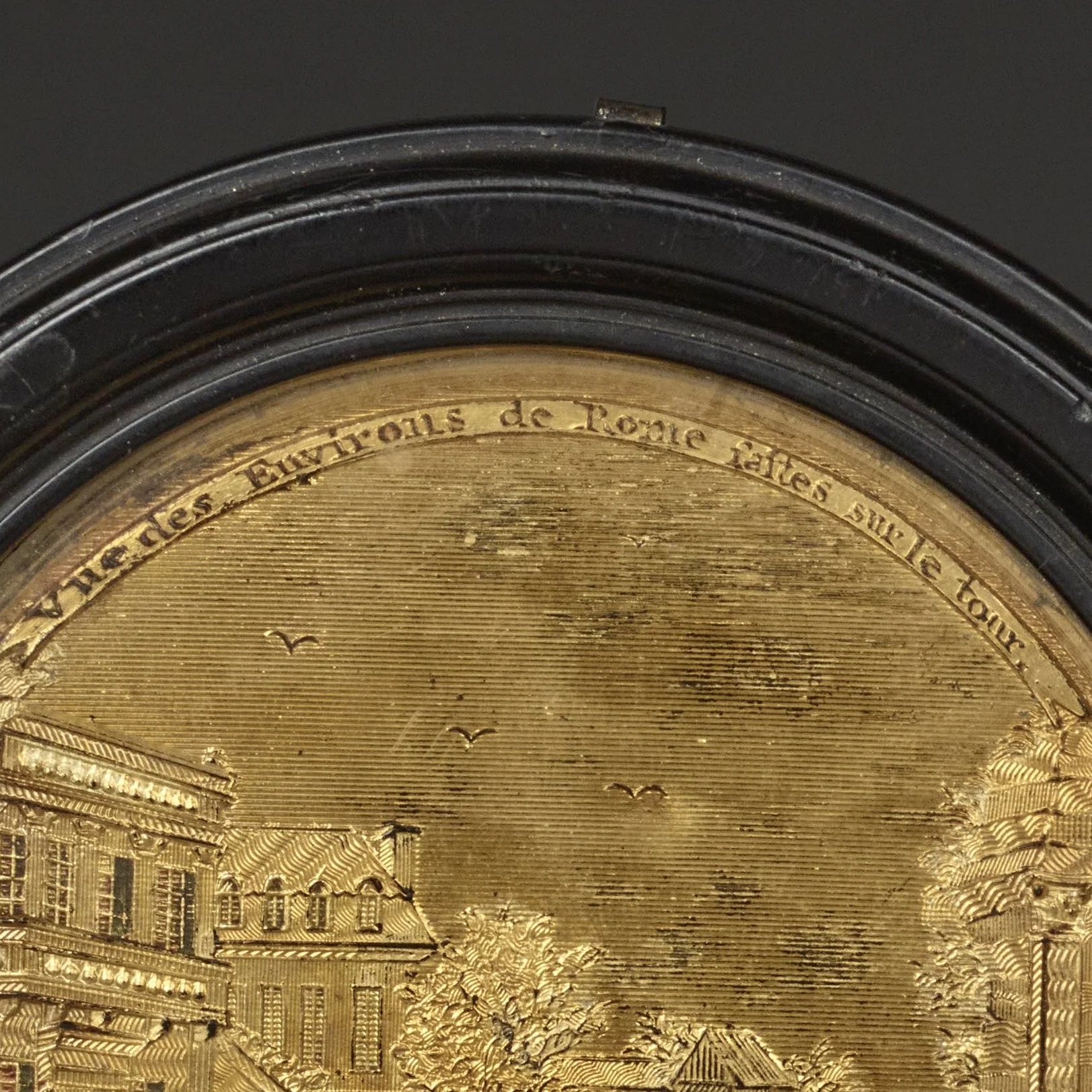Compigné painting representing a view of Rome’s surroundings
- Description
- Histoire
France, second half of the 18th century
Thomas Compigné
Tortoiseshell and gold leaf
Diameter: 9,5 cm – 3 ¾ inches
This small engraved and gilded tortoiseshell medallion depicts a view of Rome animated by figures and framed by a gold border. The uniqueness of the tortoiseshell and the gold are highlighted by delicate engraving work that adds relief to the composition.
In the foreground, the scene depicts the Tiber River, on which a boat is being pulled by an oarsman. The view is taken from the shore, bordered by greenery and part of a ruined triumphal arch on the right. The arrival of another boat can be seen on the left. Several figures along the shoreline, difficult to make out, mingle with the vegetation on both banks.
In the background, a wall preceded by aquatic plants is interrupted by a staircase leading to a vast neoclassical mansion. This Italianate-roofed residence features a first floor with large windows punctuated by pilasters with Corinthian capitals, and a balcony above an imposing double-leaf door.
In the background, the windows of a second imposing high-roofed building can be seen behind the garden trees. In the distance, other houses give a glimpse of the town continuing along the shore. An engraved ribbon runs across the top of the medallion, inscribed “Vue des environs de Rome fait sur le tour” [View of Rome’s surroundings made on the lathe].
Paintings in Compigné
Of great preciousity and variety of materials, the paintings in Compigné were made according to a mysterious process starting from a sheet of tortoiseshell or carboard paper to which a pewter or gold leaf was applied. The surface could then be decorated with gold, silver, gouache and coloured varnishes. These “miniatures”, known today under the name of Compigné, had a great success in the 1760s.The small format, characteristic of this production, required to work in extreme precision, probably with the help of a magnifying glass, to develop the perfection of these technical details and colours.
Thomas Compigné
Arrived from Italy, probably around 1750, Thomas Compigni took the name Compigné when he settled under the sign of “Roi David”, Rue Greneta, in Paris. As an ivory turner, he specialised in the manufacture and sale of boxes, knitting sets, draughts and chess sets, snuffboxes and other cane handles of blond tortoiseshell inlaid with gold. Renowned for the quality of his objects, he passed on to posterity through the production of precious paintings whose technique remains mysterious today. In 1773, he presented two views of the Château de Saint-Hubert to the King and obtained the title of “tabletier privilégié du Roi” under Louis xv and Louis xvi. His preferred themes are most often views of towns, monuments and castles from the perspective of parks or landscapes animated by small characters.
Bibliography :
- Plaisir de France, « Les Compignés et leurs créateurs, ces délicats chefs‑d’œuvre de la tabletterie au xviiie siècle », n° 427, March 1975.
- Compigné, peintre et tabletier du Roy, exhibition catalogue, Grasse, Villa-Musée Jean-Honoré Fragonard, June-July 1991.
